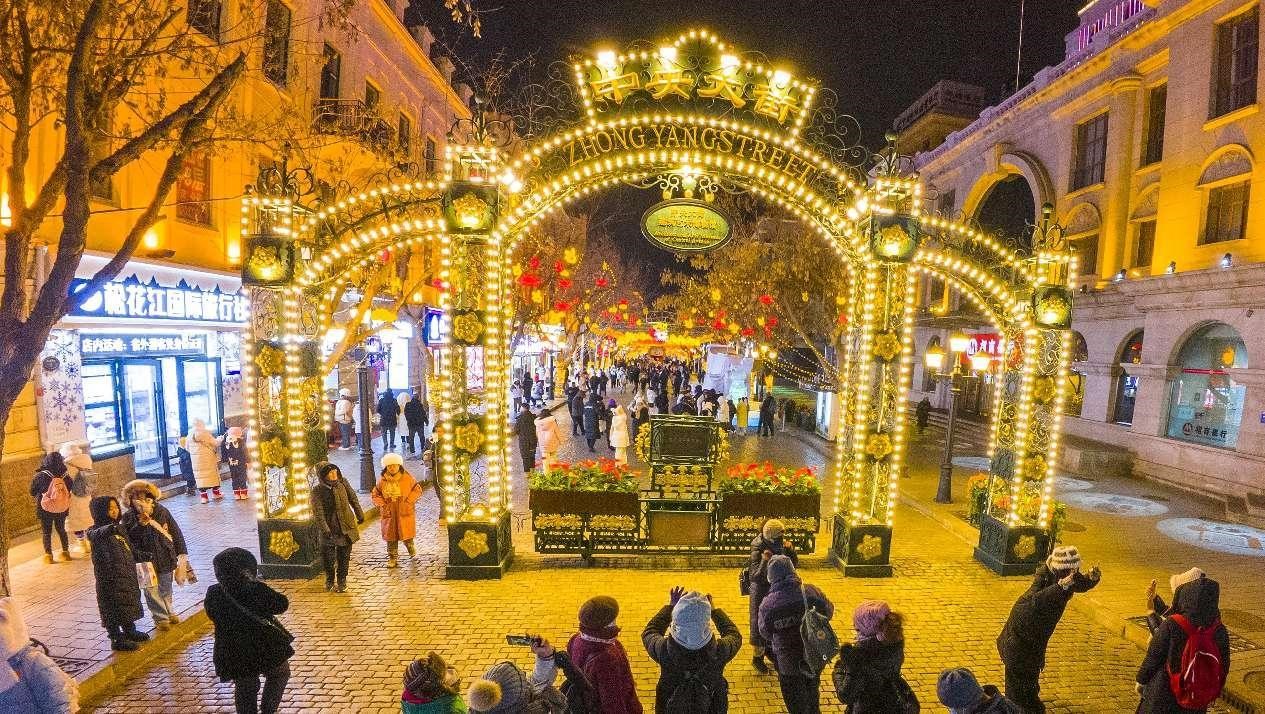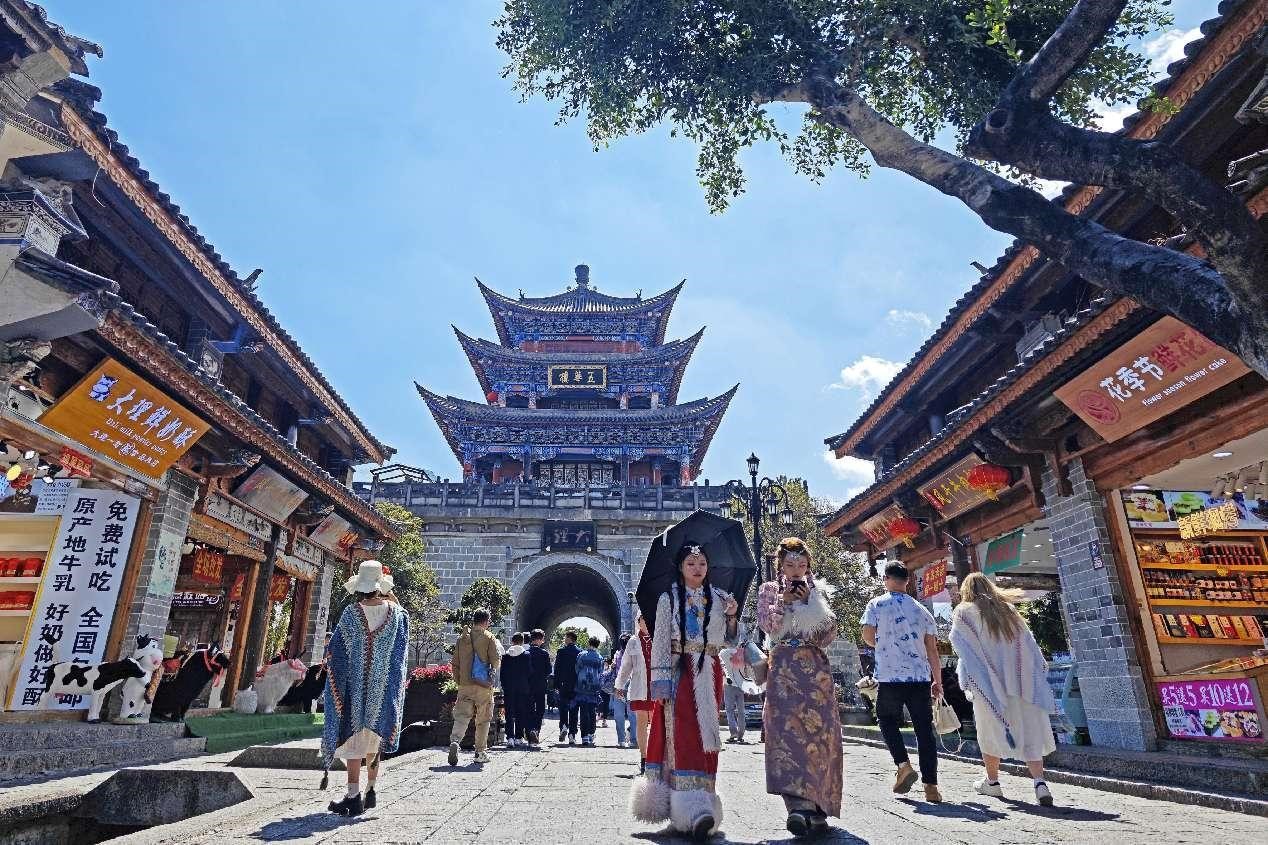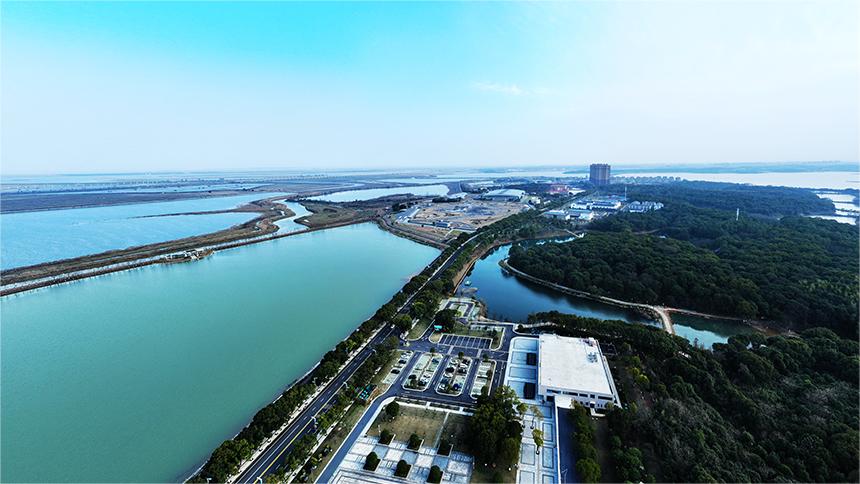Chinese "internet-famous cities" find key to development

Tourists pose for pictures in a century-old street in Harbin, northeast China's Heilongjiang province. (People's Daily Online/Sun Lijun)
This past winter, Harbin in northeast China's Heilongjiang province just went viral, gaining huge fame on the internet as a tourism hot spot.
According to statistics released by a big data research institute under Chinese technology company Sina, information about Harbin's tourism began surging in late December last year. The total online information exceeded 10 million pieces, a quadruple increase year-on-year.
Videos showcasing Harbin's features spammed social media pages. They showed Oroqen people walking on the street, leading their reindeer and wearing traditional hats made of Siberian roe deer fur, plump arctic foxes curling docilely in the arms of tourists, with their eyes squinted to slits, as well as exquisite frozen pear slices and an artificial moon hanging above the St. Sophia Cathedral...
Driven by the social media buzz, Harbin's offline tourism was equally prospering. According to big data analysis by Harbin's culture and tourism bureau, during the three-day New Year holiday, the city welcomed a total of over 3 million visits, generating 5.9 billion yuan ($821.11 million) in tourism revenue, 4.4 times and 7.9 times the figures from the same period last year, respectively. During the Spring Festival period, Harbin received more than 10 million visits, with tourism revenue reaching 16.42 billion yuan, both all-time highs for the city.
Harbin's popularity reminds people of other Chinese cities that have previously captured internet stardom: Chongqing, Changsha in Hunan, Zibo in Shandong, Litang in Sichuan...
Despite their distinct characteristics and varied styles, these cities have all drawn massive crowds of tourists with their diverse urban landscapes.

A traditional Chinese music performance is staged in an intangible cultural heritage exhibition hall in Quanzhou, southeast China's Fujian province. (People's Daily Online/Lin Sheng)
According to Wang Xin, associate dean of the National Institute of Advertising at the Communication University of China, cities can develop their iconic cultural concepts by uncovering and amplifying distinctive spatial and cultural activities based on existing perceptions of urban culture held by residents and visitors. These cultural concepts then spread widely through social media, attracting attention from people who are not present and giving first-hand experiences to those on site.
For instance, those who are not in Harbin can watch the city's attractions online, and tourists to the city can share their first-hand experiences by posting photos on social media and more. This process exponentially attracts more tourists to spontaneously participate in the promotion of "internet-famous cities."
How do "internet-famous cities" attract even more tourists? They have mastered the art.
Quanzhou in southeast China's Fujian province, the starting point of the ancient Maritime Silk Road, has leveraged its rich resources of intangible cultural heritage to launch an experiential activity that encourages visitors to not only appreciate the local marionette show but also try manipulating the marionettes themselves.
Additionally, the city has opened night markets and increased evening performances by local troupes, expanding nighttime tourism options for visitors.
Dali in southwest China's Yunnan province, a renowned tourism destination now gaining fame on the internet, is currently cultivating an urban culture centered around coffee. Nowadays, visitors to Dali can not only admire the scenic Cangshan Mountain and Erhai Lake, but also savor different varieties of coffee to feel the charm of the "City of Coffee."

Tourists visit a pedestrian street in Dali Bai autonomous prefecture, southwest China's Yunnan province. (People's Daily Online/Liu Debin)
For those cities that rose to internet fame through TV dramas and films, relevant governments have adopted creative approaches, blending the features of the cities with filming locations.
For instance, the web series "The Bad Kids" was filmed in the Chikan Old Street in Zhanjiang, Guangdong province. After the hit went sensational, the local government invited history and culture experts to train a volunteer service team, so that the team could share the rich history and cultural heritage of the old street with visitors.
Regardless of what propelled a city to internet stardom, it's evident that "internet-famous cities" are all attempting to integrate culture and tourism. This allows tourists to take away more than just "buzzwords" and "catchphrases," leaving them with deeper, more lasting memories.
How to convert online data traffic into long-term popularity and sustained development is a question every "internet-famous city" grapples with. Experts suggest that upholding a visitor-centric philosophy is paramount for a city to thrive in tourism. Providing comprehensive and thoughtful public services is crucial for retaining visitors.
"Service awareness is cultivated over the long term," said Liu Simin, vice president of the tourism branch of the China Society for Futures Studies. While making short-term, intensive efforts to improve services for visitors can provide temporary relief during peak tourist seasons, an "internet-famous city" can only sustain long-term popularity by establishing an overall visitor-friendly environment and continually enhancing supporting amenities and public services.
Culture is the soul of a city. "When the online fame becomes a thing of the past, to retain visitor traffic and maintain lasting appeal, cities must focus on local culture and residents, as these are elements that cannot be replicated," said Huang Zhuowei, associate professor at the School of Tourism Management, Sun Yat-sen University. Huang added it is important to develop non-mainstream attractions or those not driven by online trends.
Photos
Related Stories
- Dalian welcomes first international cruise ship since 2020
- Elderly make beeline for niche destinations
- China Hospitality Association urges greater convenience for global travelers
- China enhances foreign traveler payment services, anticipates continued market growth
- China sees robust recovery, vigorous growth in cultural, tourism industries: minister
Copyright © 2024 People's Daily Online. All Rights Reserved.









